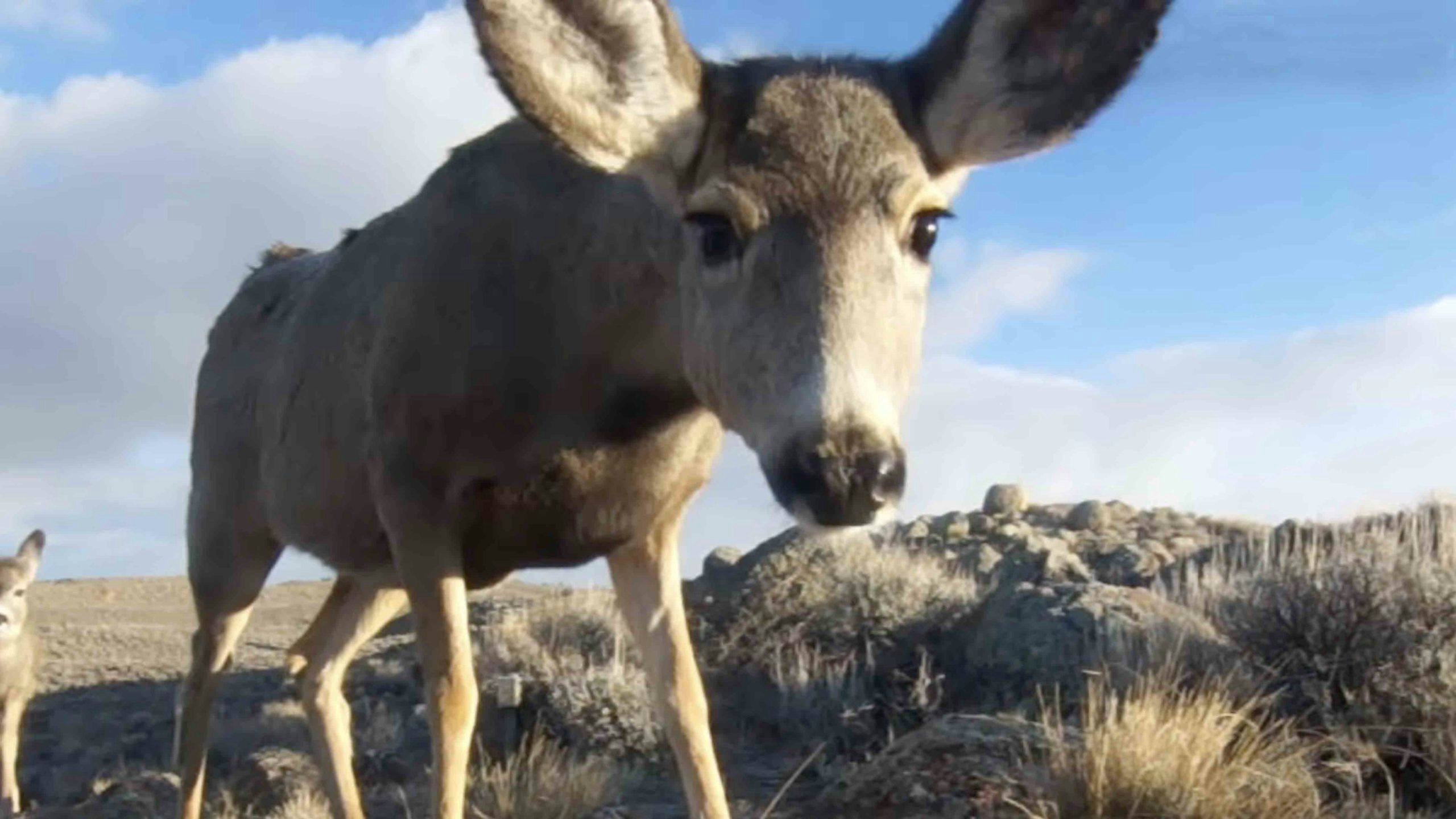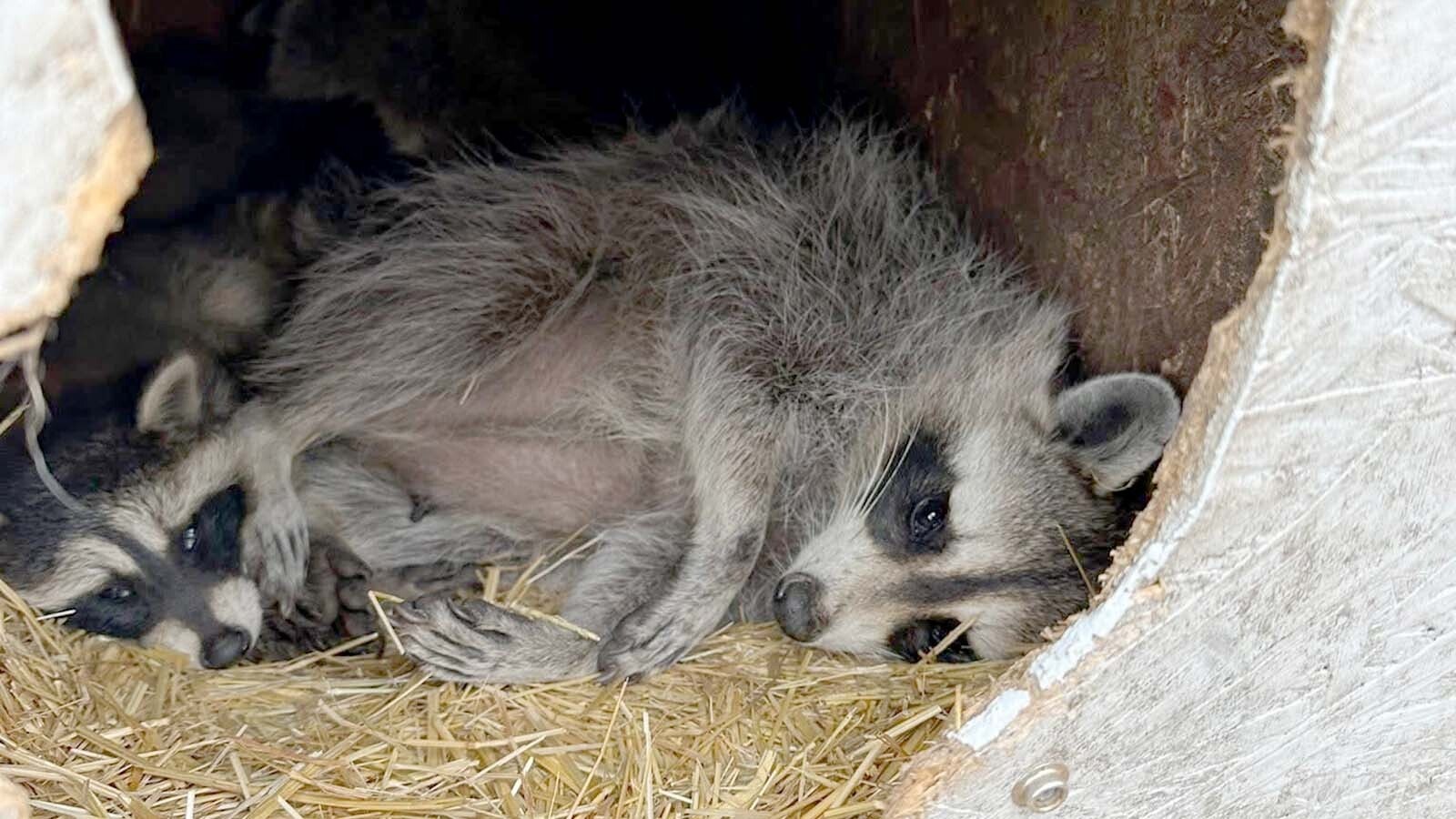By Mark Heinz, Outdoors Reporter
Mark@CowboyStateDaily.comShe’s beaten the odds of survival, shattered long-distance travel records and become a social media rock star with hooves.
Deer 255 is a mule deer doe that over the past several years has logged roughly 2,100 miles of travel during her migrations across Wyoming’s vastness. And those are just the miles researchers know about of for sure since they started tracking her movements in 2016.
She’s closing in on 12 years old, a remarkable age for her species as it’s rare for mule deer to live past 9 or 10. And she’s still going strong.
Collar Cam
Videos of her treks – documented by a GPS tracking collar she wears – are a huge hit on social media. Some have rolled up millions of views from people all over the world.
Deer 255 averages about 200 miles each way as she migrates between her usual summer range in Jackson Hole and her winter range near Superior in the Red Desert.
Her longest recorded trek was 242 miles.
Luke Wilde, a Ph.D. student in the Kauffman Lab of the Wyoming Cooperative Fish and Wildlife Research Unit at the University of Wyoming, told Cowboy State Daily that even with a tracking device on her, Deer 255 can still be elusive at times.
“She’s the hardest deer for us to find,” Wilde said. “She’s crafty.”
As of Friday, Deer 255 was still haunting her summer range, a rugged section of the high country in the Jackson Hole area.
When researchers were there earlier this month “hardcore, back county elk hunters” were the only other people they encountered, said Wilde, who also is a graduate fellow in the UW-based Wyoming Migration Initiative.
What’s In A Name?
One might wonder why wildlife researchers didn’t give Deer 255 a more personable name, like “Bernice.”
That’s for a couple of reasons, said WMI writer and filmmaker Gregory Nickerson.
“She’s still a wild animal, not a pet,” he told Cowboy State Daily on Friday.
Researchers have in the past given some of the deer they’ve tracked personal names, but sometimes that comes with some unfortunate karma.
“Each of those have died early, and we didn’t want to jinx her by giving her a human name,” Nickerson said.
Deer 255 was briefly called “The Island Park Doe” because Island Park, Idaho, is one of the most distant points from the Red Desert she’s reached in her travels, Nickerson said.
The doe was the 55th deer captured during the second year of an ongoing study of several mule Wyoming mule deer herds, Wilde said. Hence, she’s “255.”
“Who knows how another number would feel?” Wilde said. “But 255 has become her name. I don’t know if there’s just something about the phonetics of it – Deer 255.”
Tracking Deer 255 is part of the Red Desert to Hoback Mule Deer Study, a collaboration between Wyoming Game and Fish Department, Wyoming Bureau of Land Management High Desert Office, and the Monteith Shop and Wyoming Coop Unit at UW.
Bigger And Better
While a few mule deer are known to basically stay put in specific areas year-round, most migrate between summer and winter ranges, Wilde said. Distances can be only a few miles, and most deer aren’t known to travel more than about 100 miles each way.
However, extended migrations like the ones 255 take might make for larger, better and longer-lived deer, he said.
In addition to her unusual longevity, Deer 255 also is huskier than most mule deer does, he said. Most does weigh about 140 pounds. Deer 255 tips the scales to a robust 170.
It could be that traveling longer distances as the seasons change has allowed her to “ride the green wave,” he said.
Meaning that, during the spring, she follows the lushest food sources northward, moving onward before an area starts to dry out, Wilde said. Likewise, on her way back south and downward in elevation during the fall and early winter, she stays ahead of the snowfall, enjoying the best available food sources as winter closes in behind her.
Deer that don’t travel as far don’t have that advantage and are pretty much stuck with whatever they find within their limited ranges, Wilde said.
That could mean the urge to migrate long distances is genetically embedded in some mule deer, he said. Deer 255 could have come from a line of deer that migrated far. And her fawns might continue to trek vast distances across Wyoming after she’s gone.
It’s thought that a fair number of her fawns have survived, Wilde said, though there’s no way of knowing for certain.
She had a single fawn in 2016, and birthed twins each spring from 2018-2022.

Extended Radio Silence
The full extent of her exploits can never be known because Deer 255’s GPS collar went dead in the Island Park region in August 2016, Nickerson said.
It was mostly sheer luck when researchers captured her in 2018, more than 200 miles away near Steamboat Mountain in the Red Desert. She was outfitted with a new collar and has been tracked again since.
She is known to have traveled into Grand Teton Park and “she has set foot in Yellowstone Park as well,” he said.
That means Deer 255 has visited many of Wyoming’s storied places and has traveled across every sort of landscape and topography the Cowboy State has to offer, he said.
Her travel routes also frequently take her across a patchwork of public and private land, and narrow corridors hemmed by development and hazards such as highways, Nickerson said.
That makes Deer 255’s social media popularity a great way to convey to people all over the world the importance of protecting and preserving big game migration routes, he said.
How Long Does The Journey Take?
The time Deer 255 puts into her treks varies. She has numerous “stopover” places along her preferred travel routes where she might linger for as long as 20 days, Wilde said. The rate of snowmelt and when and where her fawns are born each spring factor in.
Sometimes she takes months to amble down to the Red Desert and doesn’t arrive on her winter range until mid-January, he said.
“During some years, this same deer will zip all the way down in a week” if the snow comes early and hard enough, Wilde said, adding that mule deer can frequently travel 20-40 miles a day when migrating.
Deer 255 is loath to leave her summer stronghold in Jackson Hole because the living is good there, Nickerson said. She’s picked hangouts in high, steep country where to forage is good, but the roughness of the country discourages people from going in.
Only when the snow starts to fly thick will she leave, he said. But when it does, she has to hurry out because the area quickly accumulates several feet of snow.
There’s no telling when Deer 255 will take her last steps, but Nickerson said he hopes that’s not for a while yet.
“She catches our attention as humans and biologists,” he said. “She serves to teach the public about how the migration story is important to these animals.”





